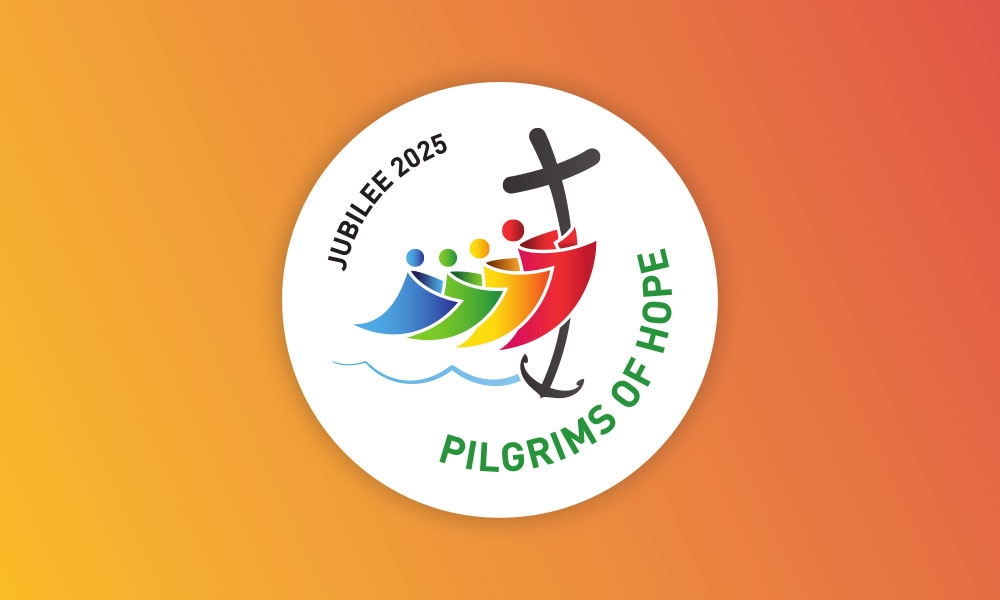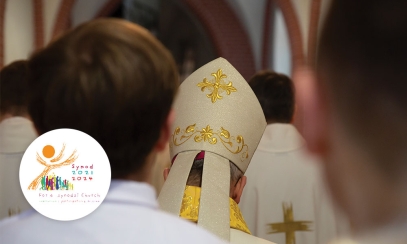
Jubilee 2025
What is a Jubilee Year?
- A Holy Year of the forgiveness of sin, conversion and joyful celebration.
- The word “jubilee” comes from the Hebrew word yobel, which refers to the ram’s horn used to announce a jubilee in the Old Testament.
Old Testament origins
God told Moses that every fiftieth year was to be set aside for the return of absent members to their households, the restoration of land to its owners, the release of Hebrew slaves and the forgiveness of debts.
This fiftieth year you shall make sacred by proclaiming liberty in the land for all its inhabitants. It shall be a jubilee for you, when every one of you shall return to his own property, every one to his own family estate. (Lev. 25:10)
Like the sabbath, which took place on the seventh day of each week, the jubilee was a time for the Israelites to re-establish a proper relationship with God and with one another.
Tradition continues in Christianity
- Pope Boniface VIII proclaimed the first Christian jubilee in A.D. 1300, granting the full remission of sin for those who confessed their sins and made a pilgrimage to St. Peter’s Basilica in Rome.
- The Church first celebrated jubilee years every 100 years. This was eventually shortened to every 50 years and then every 25 years.
Recent Jubilee years
- 1950: During this Holy Year of 1950, Pope Pius XII proclaimed the dogma of the Assumption of the Blessed Virgin Mary into Heaven.
- 1975: This Holy Year of reconciliation was proclaimed by Pope Paul XI.
- 1983: Pope John Paul II proclaimed a special jubilee year in 1983 to celebrate the 1,950th anniversary of the death and resurrection of Jesus.
- 2000: Pope John Paul II proclaimed the Great Jubilee of the Year 2000.
- 2015: Pope Francis declared an extraordinary jubilee for the 50th anniversary of the end of the Second Vatican Council.The jubilee was dedicated to mercy.
Jubilee 2025: Pilgrims of Hope
Jubilee 2025 was proclaimed by Pope Francis in the Papal Bull Spes Non Confundit (“Hope does not disappoint”).
“The coming Jubilee will thus be a Holy Year marked by the hope that does not fade, our hope in God. May it help us to recover the confident trust that we require, in the Church and in society, in our interpersonal relationships, in international relations, and in our task of promoting the dignity of all persons and respect for God’s gift of creation.” (Pope Francis, Spes Non Confundit 25)
The jubilee will begin in Rome on the vigil of the Lord’s Nativity on Dec. 24, 2024 with the opening of the Holy Door of St. Peter’s Basilica, and in local dioceses on Holy Family Sunday on Dec. 29. It will conclude in local dioceses the following Holy Family Sunday on Dec. 28, 2025, and in Rome on the Solemnity of the Epiphany of the Lord, Jan. 6, 2026, with the closing of the Holy Door of St. Peter’s Basilica.
Hallmarks of the Jubilee
- Jubilee Indulgence: Special graces for the forgiveness of sins are made available during the Jubilee Year. The faithful may obtain a plenary indulgence – remission of all temporal punishment (time in Purgatory) for sin– by meeting the normal conditions (confession, Holy Communion, prayer for the pope’s intentions, and no attachment to sin) and by participating in one of the following activities:
- Pilgrimages: The four major basilicas in Rome are the main pilgrimage destinations, but pilgrims may also go to the Holy Land, their diocesan cathedral or other officially designated locations.
- Pious visits to sacred places: At these locations, the faithful are to engage in Eucharistic adoration and meditation, among other spiritual practices.
- Works of mercy and penance: The faithful are to perform the spiritual or corporal works of mercy or carry out works of penance, such as abstaining from meat on Fridays.
- Holy Doors: The pope opens the Holy Door of St. Peter’s Basilica at the beginning of each jubilee year. Passing through the holy doors symbolizes the pilgrim’s journey of conversion.
- Papal Basilicas: The pope will open the Holy Doors of the four main churches (called “major basilicas”) in Rome: St. Peter’s Basilica, St. John Lateran, St. Mary Major, and St. Paul Outside the Walls.
How to participate in Jubilee 2025
- Make a pilgrimage to Rome. Some dioceses, parishes and other organizations will be coordinating pilgrimages, but you may also go on your own.
- Participate in a local celebration of the jubilee. Some dioceses, parishes and other organizations will coordinate local celebrations for those unable to travel to Rome.
- Obtain the Jubilee Indulgence through one of the other means (works of mercy and penance, making a pilgrimage to your cathedral, etc.).
- Serve as a jubilee volunteer. Applications are available online.
- Pray for the pope, the Church and all who take part in the jubilee.
The Jubilee Prayer
Father in heaven,
may the faith you have given us
in your Son, Jesus Christ, our brother,
and the flame of charity enkindled
in our hearts by the Holy Spirit,
reawaken in us the blessed hope
for the coming of your Kingdom.
May your grace transform
us into tireless cultivators of the seeds
of the Gospel.
May those seeds transform from within both humanity and the whole cosmos
in the sure expectation
of a new heaven and a new earth,
when, with the powers of Evil vanquished,
your glory will shine eternally.
May the grace of the Jubilee
reawaken in us, Pilgrims of Hope,
a yearning for the treasures of heaven.
May that same grace spread
the joy and peace of our Redeemer
throughout the earth.
To you our God, eternally blessed,
be glory and praise for ever.
Amen.
LEARN MORE
The USCCB will be sharing ideas on how to develop local events for the jubilee.


